August 24, 2024
Hábitos que todo inmigrante emprendedor debería
adoptar
Ser un inmigrante emprendedor en Estados Unidos ha sido una de las
experiencias más desafiantes y gratificantes de mi vida. Mi viaje, que
comenzó con muchos sueños y pocos recursos, me ha enseñado valiosas
lecciones que quiero compartir con ustedes hoy. A lo largo de los años,
he desarrollado una serie de hábitos que han sido fundamentales para mi
éxito, y creo que también pueden ser útiles para cualquier inmigrante
emprendedor. Aquí les dejo una guía de estos hábitos, esperando que
encuentren inspiración y herramientas prácticas para su propio
camino.
 La
importancia de la resiliencia
La
importancia de la resiliencia
La resiliencia es, sin duda, uno de los hábitos más cruciales que un
inmigrante emprendedor debe adoptar. Al llegar a un nuevo país,
enfrentamos una serie de desafíos que pueden parecer insuperables: desde
barreras idiomáticas hasta diferencias culturales y sistemas legales
desconocidos. En mi caso, la resiliencia me ha permitido superar cada
obstáculo que se ha presentado.
Recuerdo claramente los primeros años después de mi llegada a Estados
Unidos. No fue fácil adaptarme, pero siempre mantuve la mentalidad de
que cada desafío era una oportunidad para aprender y crecer. Cada vez
que las cosas no salían como esperaba, me recordaba a mí mismo que el
fracaso es parte del proceso y que, con perseverancia, podría convertir
esos fracasos en éxitos futuros.
Cultivar una red de apoyo
Otro hábito esencial es cultivar una red de apoyo sólida. Los
inmigrantes a menudo dejamos atrás nuestras familias y amigos, por lo
que es crucial construir nuevas conexiones que puedan ofrecernos apoyo
emocional y profesional. En mi experiencia, encontrar mentores y colegas
que compartieran mis valores y objetivos fue fundamental para mi
desarrollo.
Participar en comunidades locales, asistir a eventos de networking y
unirme a asociaciones profesionales fueron algunas de las estrategias
que utilicé para construir mi red. Estas conexiones no solo me
proporcionaron valiosas oportunidades de negocio, sino que también me
ofrecieron el apoyo moral que necesitaba en momentos difíciles.
Aprender constantemente
El aprendizaje continuo es otro hábito indispensable. El mundo de los
negocios está en constante cambio, y es esencial mantenerse actualizado
con las últimas tendencias y desarrollos en tu industria. Como
inmigrante, esto puede ser aún más desafiante debido a las diferencias
en la educación y las prácticas comerciales entre tu país de origen y
Estados Unidos.
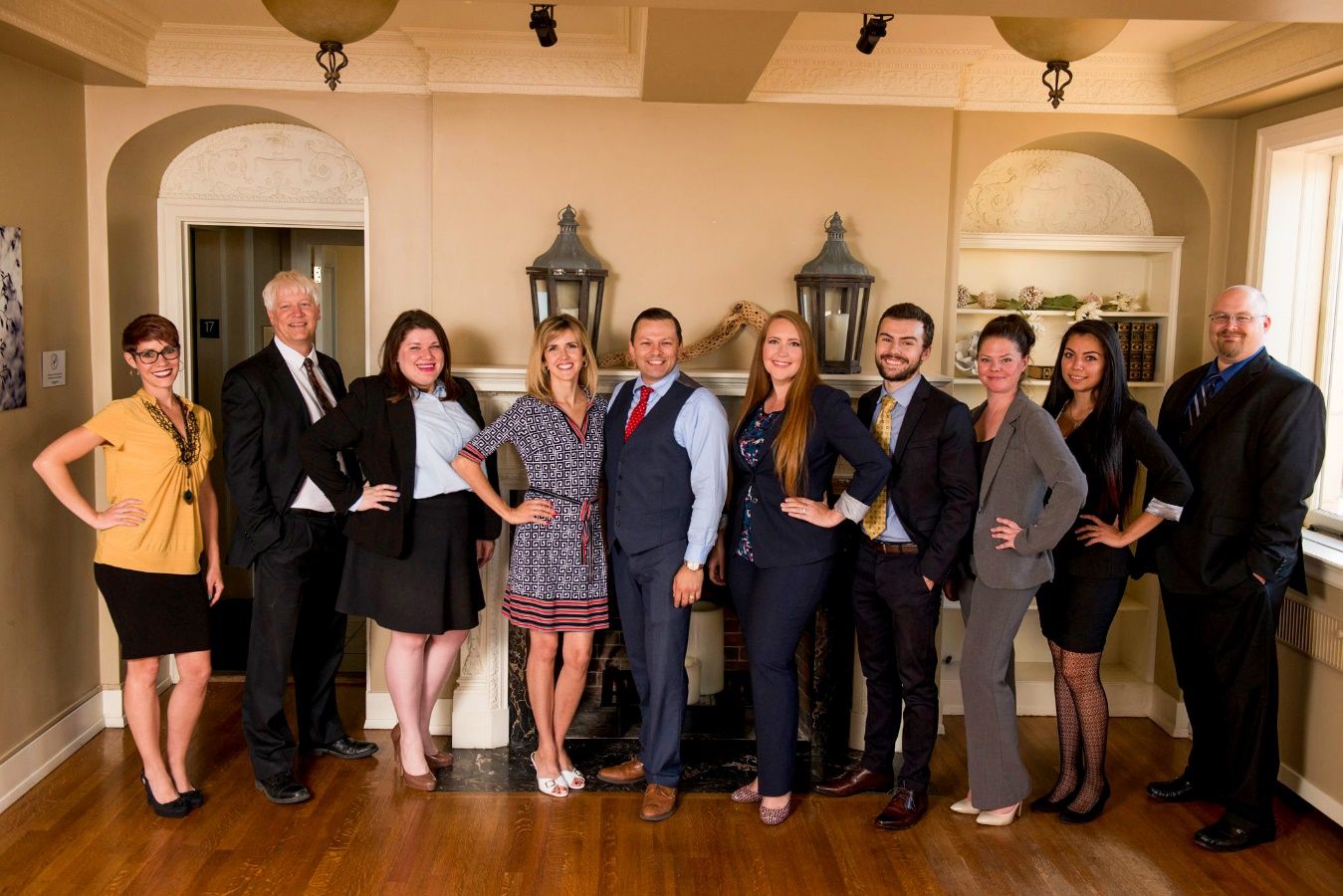
Personalmente, siempre he dedicado tiempo a la educación continua.
Asistir a seminarios, leer libros y artículos relevantes, y tomar cursos
en línea me han permitido adquirir nuevas habilidades y conocimientos
que han sido esenciales para mi éxito. Además, aprender inglés a un
nivel avanzado fue una prioridad para mí, ya que me permitió comunicarme
efectivamente y acceder a un mayor número de recursos.
Adaptarse a la cultura local
Adaptarse a la cultura local es otro hábito crucial. Cada país tiene
su propia manera de hacer negocios, y es importante entender y respetar
estas diferencias culturales. Al principio, me resultó difícil adaptarme
a la cultura empresarial estadounidense, pero con el tiempo, aprendí a
apreciar sus ventajas y a integrarlas en mi propio estilo de
trabajo.
Para adaptarme, comencé observando y aprendiendo de mis colegas y
competidores locales. Presté atención a cómo se comportaban en
reuniones, cómo se comunicaban y qué valoraban en sus relaciones
comerciales. Poco a poco, incorporé estos aspectos en mi propia práctica
empresarial, lo que me permitió establecer relaciones más sólidas y
efectivas con mis clientes y socios.
Gestionar el tiempo efectivamente
La gestión del tiempo es otro hábito vital para cualquier
emprendedor. Como inmigrantes, a menudo tenemos que trabajar más duro
para demostrar nuestro valor y alcanzar nuestros objetivos. Aprender a
priorizar tareas, delegar responsabilidades y mantener un equilibrio
entre el trabajo y la vida personal es esencial para evitar el
agotamiento y mantener un alto nivel de productividad.
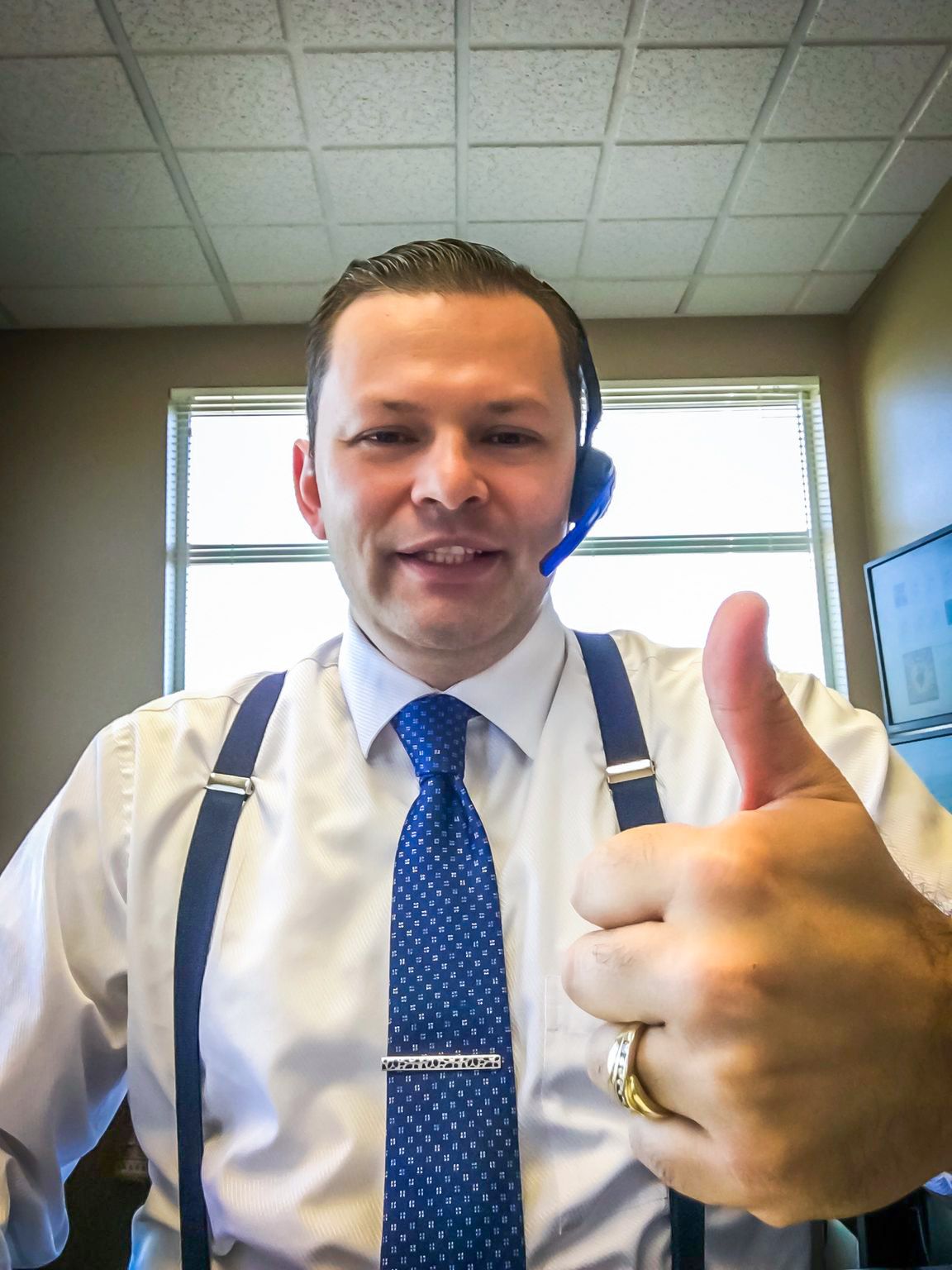 En
mi caso, desarrollar una rutina diaria estructurada me ha ayudado
enormemente. Cada mañana, dedico unos minutos a planificar mi día,
estableciendo metas claras y realistas. Además, he aprendido a decir
“no” a las actividades que no se alinean con mis objetivos principales,
lo que me permite concentrarme en lo que realmente importa.
En
mi caso, desarrollar una rutina diaria estructurada me ha ayudado
enormemente. Cada mañana, dedico unos minutos a planificar mi día,
estableciendo metas claras y realistas. Además, he aprendido a decir
“no” a las actividades que no se alinean con mis objetivos principales,
lo que me permite concentrarme en lo que realmente importa.
Mantener una mentalidad positiva
Por último, pero no menos importante, mantener una mentalidad
positiva es esencial. El camino del emprendedor está lleno de altibajos,
y es fácil desanimarse ante las dificultades. Sin embargo, una actitud
positiva puede marcar la diferencia entre el éxito y el fracaso.
A lo largo de mi carrera, he enfrentado innumerables desafíos, pero
siempre he tratado de mantener una perspectiva optimista. Me enfoco en
mis logros, por pequeños que sean, y celebro cada victoria. Esto me
ayuda a mantenerme motivado y a seguir adelante, incluso en los momentos
más difíciles.
Ser un inmigrante emprendedor es una aventura llena de retos y
recompensas. La resiliencia, una red de apoyo sólida, el aprendizaje
continuo, la adaptación cultural, la gestión efectiva del tiempo y una
mentalidad positiva son hábitos que me han ayudado a navegar este camino
con éxito. Espero que estas reflexiones personales les sirvan de guía e
inspiración en su propio viaje emprendedor. Recuerden siempre que cada
desafío es una oportunidad para crecer y que el éxito está al alcance de
aquellos que perseveran y creen en sí mismos.
August 23, 2024
Were Cars Better in the Past? Here’s My Take
Cars have been a fundamental part of my life, both personally and
professionally. I have witnessed the evolution of vehicles from classics
to modern models. Over the years, I’ve wondered if cars from the past
were truly better than today’s. In this article, I’ll share my opinion
based on personal experiences and observations.
 Nostalgia and Classic
Design
Nostalgia and Classic
Design
I can’t help but feel a deep nostalgia when I think of classic cars.
I grew up admiring the elegant and robust designs of vehicles like the
1960s Ford Mustang and the 1970s Chevrolet Camaro. These cars weren’t
just means of transportation; they were works of art. Every curve, every
chrome detail seemed meticulously designed to capture the essence of the
era.
The experience of driving a classic car isn’t just about getting from
point A to point B; it’s about enjoying the journey, feeling the engine
rumble under the hood, and hearing the roar of the exhaust. The cars of
the past had a unique personality that, in my opinion, is hard to find
in modern models.
Mechanical Simplicity
Another advantage of old cars is their mechanical simplicity. With a
bit of knowledge and the right tools, you could fix almost anything in
your own garage. My father used to spend weekends tuning the carburetor
or replacing worn-out parts. These activities weren’t just a way to keep
the car in good condition but also an opportunity to bond and learn
about mechanics.
In contrast, modern cars are filled with electronic components and
sophisticated software. While this has improved efficiency and safety,
it has also made repairs more complicated and expensive. You need
specialized equipment and advanced knowledge to perform even the
simplest repairs. I miss the days when I could get my hands dirty and
feel like I really understood how my car worked.
Technology and Safety
However, I cannot ignore the advantages that technology has brought
to modern cars. Advances in safety have saved countless lives. Anti-lock
braking systems (ABS), airbags, and electronic stability control are
just a few of the innovations that have made today’s cars much safer
than those of past decades.
 I
remember an occasion when I had a minor accident with an old car.
Although I came out unscathed, the lack of modern safety features made
me reflect on the risks I took every time I drove. Today’s cars are not
only designed to prevent accidents but also to protect occupants in the
event of a collision.
I
remember an occasion when I had a minor accident with an old car.
Although I came out unscathed, the lack of modern safety features made
me reflect on the risks I took every time I drove. Today’s cars are not
only designed to prevent accidents but also to protect occupants in the
event of a collision.
Moreover, technology has made cars more efficient and eco-friendly.
Hybrid and electric engines are revolutionizing the industry, reducing
our reliance on fossil fuels and lowering carbon emissions. As someone
who cares about the environment, I appreciate these advancements and the
positive impact they have on our planet.
Driving Experience
The experience of driving a classic car is incomparable. The feeling
of being directly connected to the machine, without the intermediation
of so much technology, is something that many car enthusiasts deeply
value. Modern cars, with their power-assisted steering and adaptive
suspensions, offer a smoother and more comfortable drive, but sometimes
I feel that something of the essence of driving is lost in the
process.
I remember the first time I drove a 1980s Porsche 911. There was no
electronic assistance, and every curve required concentration and skill.
It was challenging but also incredibly rewarding. Modern cars, while
impressive in terms of performance, often make driving too easy, almost
to the point of being boring.
Emotional Value
Finally, old cars have an emotional value that is hard to quantify.
It’s not just nostalgia; it’s the fact that these cars are full of
stories and memories. Every time I see a classic car, I think of the
adventures I had, the road trips, and the moments shared with friends
and family.
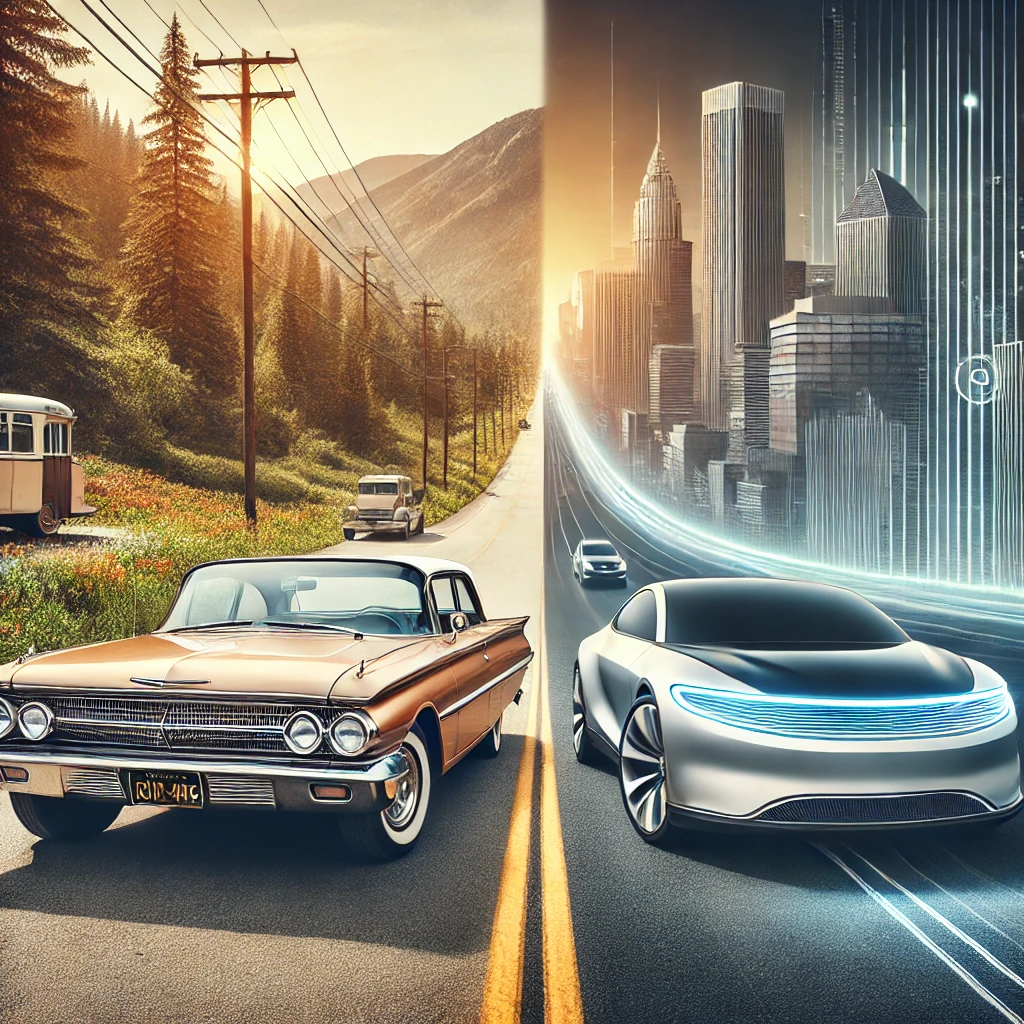
Although modern cars are more practical and safer, they often lack
that sense of history and personality. A classic car is more than a
vehicle; it’s a testament to the past, a link to a different era. And
while I appreciate the convenience and advantages of modern technology,
I will always have a special place in my heart for cars of
yesteryear.
In conclusion, while modern cars offer countless advantages in terms
of safety, efficiency, and technology, I can’t help but feel that old
cars had something special. Their design, simplicity, and emotional
value make them incomparable. So, were cars better in the past? It
depends on how you look at it. For me, both have their own charm and
place in the automotive world.
August 23, 2024
¿Eran mejores los carros en el pasado? Esta es mi
opinión
Los autos han sido una parte fundamental de mi vida, tanto a nivel
personal como profesional. He visto la evolución de los vehículos desde
los clásicos hasta los modelos más modernos. A lo largo de los años, me
he preguntado si realmente los carros de antes eran mejores que los de
ahora. En este artículo, compartiré mi opinión basada en experiencias
personales y observaciones.

Nostalgia y diseño clásico
No puedo evitar sentir una profunda nostalgia cuando pienso en los
autos clásicos. Crecí admirando los diseños elegantes y robustos de
vehículos como el Ford Mustang de los años 60 y el Chevrolet Camaro de
los 70. Estos autos no solo eran medios de transporte; eran obras de
arte. Cada curva, cada detalle de cromo, parecía estar meticulosamente
diseñado para capturar la esencia de la época.
La experiencia de manejar un auto clásico no se trata solo de llegar
del punto A al punto B, sino de disfrutar del viaje, de sentir el motor
vibrar bajo el capó y de escuchar el rugido del escape. Los autos de
antes tenían una personalidad única que, en mi opinión, es difícil de
encontrar en los modelos modernos.
La simplicidad mecánica
Otra ventaja de los autos antiguos es su simplicidad mecánica. Con un
poco de conocimiento y las herramientas adecuadas, podías reparar casi
cualquier cosa en tu propio garaje. Mi padre solía pasar los fines de
semana ajustando el carburador o reemplazando piezas desgastadas. Estas
actividades no solo eran una forma de mantener el auto en buen estado,
sino también una oportunidad para conectar y aprender sobre
mecánica.
En contraste, los autos modernos están llenos de componentes
electrónicos y software sofisticado. Si bien esto ha mejorado la
eficiencia y la seguridad, también ha hecho que las reparaciones sean
más complicadas y costosas. Necesitas equipo especializado y
conocimientos avanzados para realizar incluso las reparaciones más
simples. Echo de menos la época en la que podía ensuciarme las manos y
sentir que realmente entendía cómo funcionaba mi auto.
Tecnología y seguridad
Sin embargo, no puedo ignorar las ventajas que la tecnología ha
traído a los autos modernos. Los avances en seguridad han salvado
incontables vidas. Los sistemas de frenos antibloqueo (ABS), los airbags
y la estabilidad electrónica son solo algunos de los avances que han
hecho que los autos de hoy sean mucho más seguros que los de décadas
pasadas.
 Recuerdo una ocasión en la que
tuve un accidente menor con un auto antiguo. Aunque salí ileso, la falta
de características de seguridad modernas me hizo reflexionar sobre los
riesgos que corría cada vez que conducía. Los autos de hoy no solo están
diseñados para evitar accidentes, sino también para proteger a los
ocupantes en caso de una colisión.
Recuerdo una ocasión en la que
tuve un accidente menor con un auto antiguo. Aunque salí ileso, la falta
de características de seguridad modernas me hizo reflexionar sobre los
riesgos que corría cada vez que conducía. Los autos de hoy no solo están
diseñados para evitar accidentes, sino también para proteger a los
ocupantes en caso de una colisión.
Además, la tecnología ha hecho que los autos sean más eficientes y
ecológicos. Los motores híbridos y eléctricos están revolucionando la
industria, reduciendo nuestra dependencia de los combustibles fósiles y
disminuyendo las emisiones de carbono. Como alguien que se preocupa por
el medio ambiente, aprecio estos avances y el impacto positivo que
tienen en nuestro planeta.
Experiencia de conducción
La experiencia de conducir un auto clásico es incomparable. La
sensación de estar conectado directamente con la máquina, sin la
intermediación de tanta tecnología, es algo que muchos entusiastas de
los autos valoran profundamente. Los autos modernos, con sus direcciones
asistidas y suspensiones adaptativas, ofrecen una conducción más suave y
cómoda, pero a veces siento que algo de la esencia de manejar se pierde
en el proceso.
Recuerdo la primera vez que conduje un Porsche 911 de los años 80. No
había ningún tipo de ayuda electrónica, y cada curva requería
concentración y habilidad. Era un desafío, pero también increíblemente
gratificante. Los autos modernos, aunque impresionantes en términos de
rendimiento, a menudo hacen que la conducción sea demasiado fácil, casi
al punto de ser aburrida.
Valor emocional
Finalmente, los autos antiguos tienen un valor emocional que es
difícil de cuantificar. No es solo nostalgia; es el hecho de que estos
autos están llenos de historias y recuerdos. Cada vez que veo un auto
clásico, pienso en las aventuras que tuve, en los viajes por carretera y
en los momentos compartidos con amigos y familiares.
 Aunque los autos modernos son
más prácticos y seguros, a menudo carecen de ese sentido de historia y
personalidad. Un auto clásico es más que un vehículo; es un testimonio
del pasado, un vínculo con una era diferente. Y aunque aprecio la
conveniencia y las ventajas de la tecnología moderna, siempre tendré un
lugar especial en mi corazón para los autos de antaño.
Aunque los autos modernos son
más prácticos y seguros, a menudo carecen de ese sentido de historia y
personalidad. Un auto clásico es más que un vehículo; es un testimonio
del pasado, un vínculo con una era diferente. Y aunque aprecio la
conveniencia y las ventajas de la tecnología moderna, siempre tendré un
lugar especial en mi corazón para los autos de antaño.
En conclusión, aunque los autos modernos ofrecen innumerables
ventajas en términos de seguridad, eficiencia y tecnología, no puedo
evitar sentir que los autos antiguos tenían algo especial. Su diseño,
simplicidad y valor emocional los hacen incomparables. Así que, ¿eran
mejores los carros en el pasado? Depende de cómo lo mires. Para mí,
ambos tienen su propio encanto y lugar en el mundo automovilístico.
August 22, 2024
From Defeat to Defeat Until Final Victory
Defeats are inevitable in life. Throughout my journey, I have
experienced multiple failures, from setbacks in my professional career
to personal challenges that seemed insurmountable. However, each defeat
has taught me valuable lessons and prepared me to achieve the final
victory. In this article, I want to share my journey, my learnings, and
how each fall has brought me closer to my goals.
Early Stumbles
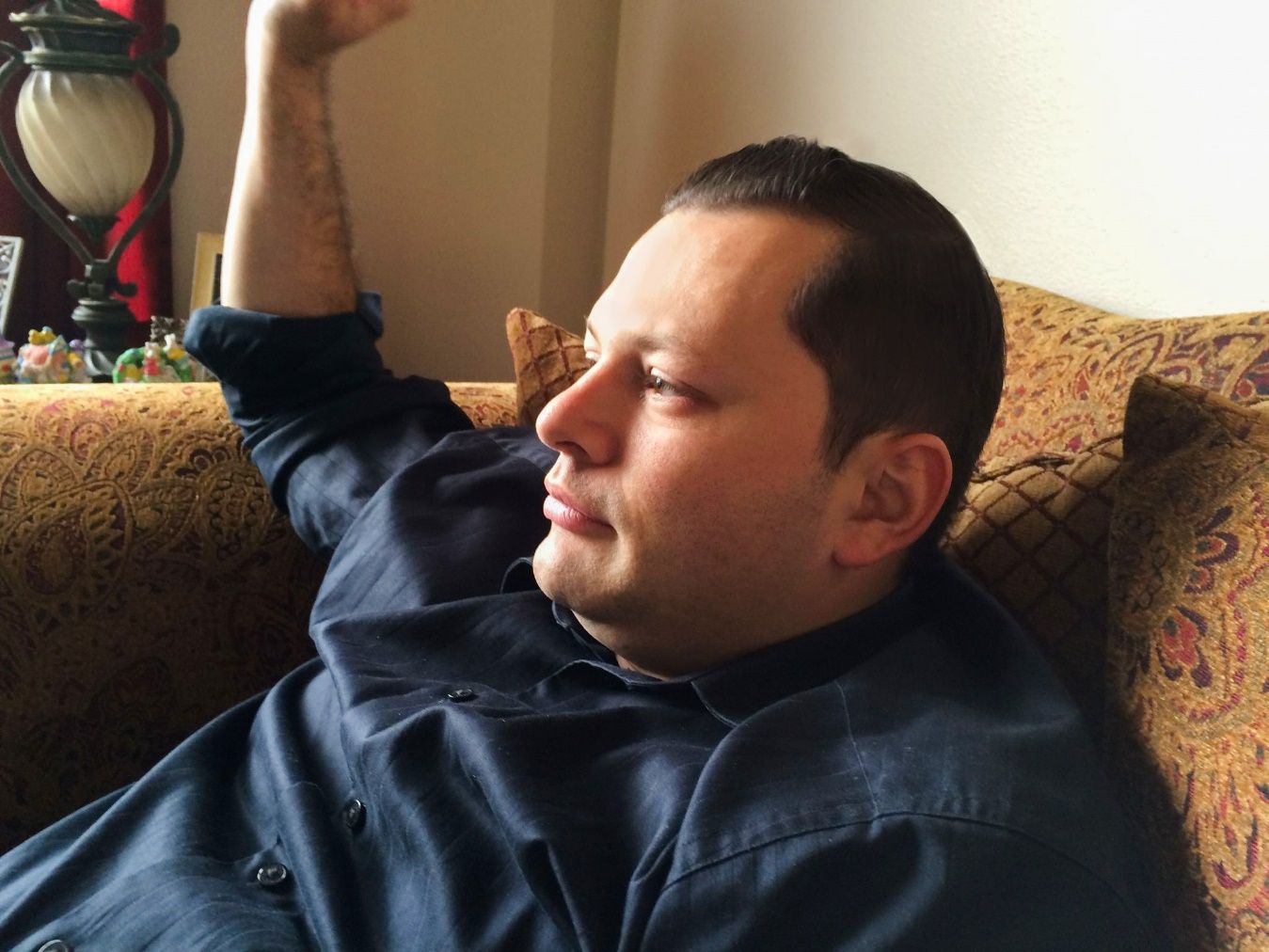 I
remember my early years in the United States, full of hopes and dreams
but also uncertainty and obstacles. Arriving in a new country without
knowing anyone, without significant financial backing, and with the
language barrier was an overwhelming experience. My first jobs were not
what I had envisioned for my future, but each one taught me something
valuable. I worked long hours in jobs unrelated to my training.
Frustration and fatigue piled up, but I never lost sight of my
goals.
I
remember my early years in the United States, full of hopes and dreams
but also uncertainty and obstacles. Arriving in a new country without
knowing anyone, without significant financial backing, and with the
language barrier was an overwhelming experience. My first jobs were not
what I had envisioned for my future, but each one taught me something
valuable. I worked long hours in jobs unrelated to my training.
Frustration and fatigue piled up, but I never lost sight of my
goals.
These early years were crucial for developing the resilience and
determination I would need later. Every day of hard work, every
difficulty faced, made me stronger and more focused on what I wanted to
achieve. It was not easy to adapt to a new culture and deal with the
loneliness I sometimes felt, but I knew that every effort had its
reward. Those first stumbles were the beginning of a path that, although
full of challenges, would lead me to great achievements.
Learning from Mistakes
One of the most challenging moments in my life was facing bankruptcy.
I had invested time, effort, and resources into a business that did not
prosper. The feeling of failure was overwhelming. However, this
experience taught me the importance of financial planning, the need to
always be informed and prepared for market changes, and the relevance of
learning from mistakes rather than regretting them. I learned that every
failure is a disguised opportunity, a lesson that prepares you for
future success.
Overcoming bankruptcy was not easy, but it was a process that
strengthened me and made me wiser. I began to see mistakes as part of
the necessary learning to grow. I started making more informed decisions
and valued the importance of having a contingency plan. This difficult
period also helped me identify my strengths and weaknesses, allowing me
to work on them and constantly improve. Today, I look back and see how
that experience, although painful, was crucial for my personal and
professional development.
The Importance of Family
In the darkest moments, my family has always been my pillar. I
remember sleepless nights, worried about the future, but finding solace
in the unconditional support of my wife Casey and my children Enrique
and Ally. Sunday afternoons with them became my refuge, moments to
recharge and remember why I was fighting. Family has taught me the true
meaning of love and sacrifice, and their support has been essential to
overcome any adversity.
My sister María has also been a key figure in my life. Working
together at Quiroga Law Office has allowed us to not only strengthen our
family bond but also build something significant and lasting. María has
been by my side every step of the way, offering her wisdom and support.
Family is, without a doubt, the foundation upon which any success is
built, and my story would not be the same without them. Their
sacrifices, love, and faith in me have driven me to keep going even in
the most challenging times.
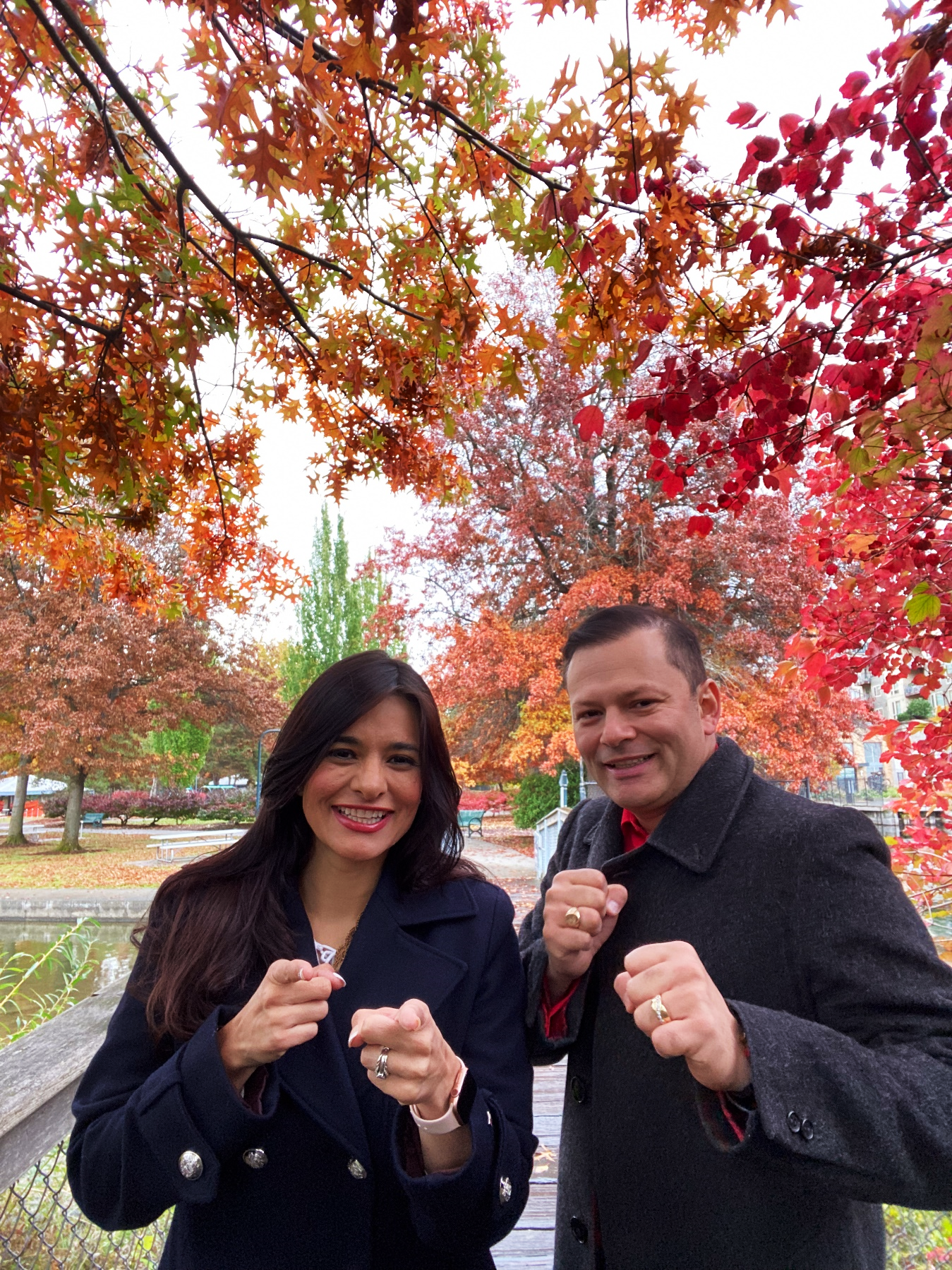 Overcoming
Professional Challenges
Overcoming
Professional Challenges
Founding Quiroga Law Office, PLLC was a dream come true, but it was
not without challenges. Each obstacle, from legal issues to staff
management, represented an opportunity to learn and grow. Today, looking
back and seeing how we have grown and the recognitions we have received,
such as the Inc. 5000 award four times, fills me with pride and
satisfaction. Each challenge overcome has been a step towards success,
reinforcing my belief in the importance of perseverance and
dedication.
Another important project has been Hector’s Whips, a car rental
company, and Empire Estate Holdings, LLC, dedicated to real estate. Both
ventures have presented new challenges and learnings, but they have also
been a testament to how, with determination and effort, it is possible
to diversify and prosper in different areas. These companies have not
only been sources of income but also of great personal satisfaction and
learning. Each professional success has been a validation that dreams
can come true with effort and tenacity.
Passion as a Driving Force
My passions for soccer, cars, and Harley motorcycles have been
significant driving forces in my life. These hobbies have taught me the
importance of discipline, precision, and dedication. Soccer, in
particular, has taught me about teamwork and strategy, lessons that I
apply daily in my professional life. Every soccer match reminds me that
teamwork and strategy are essential in both sports and business.
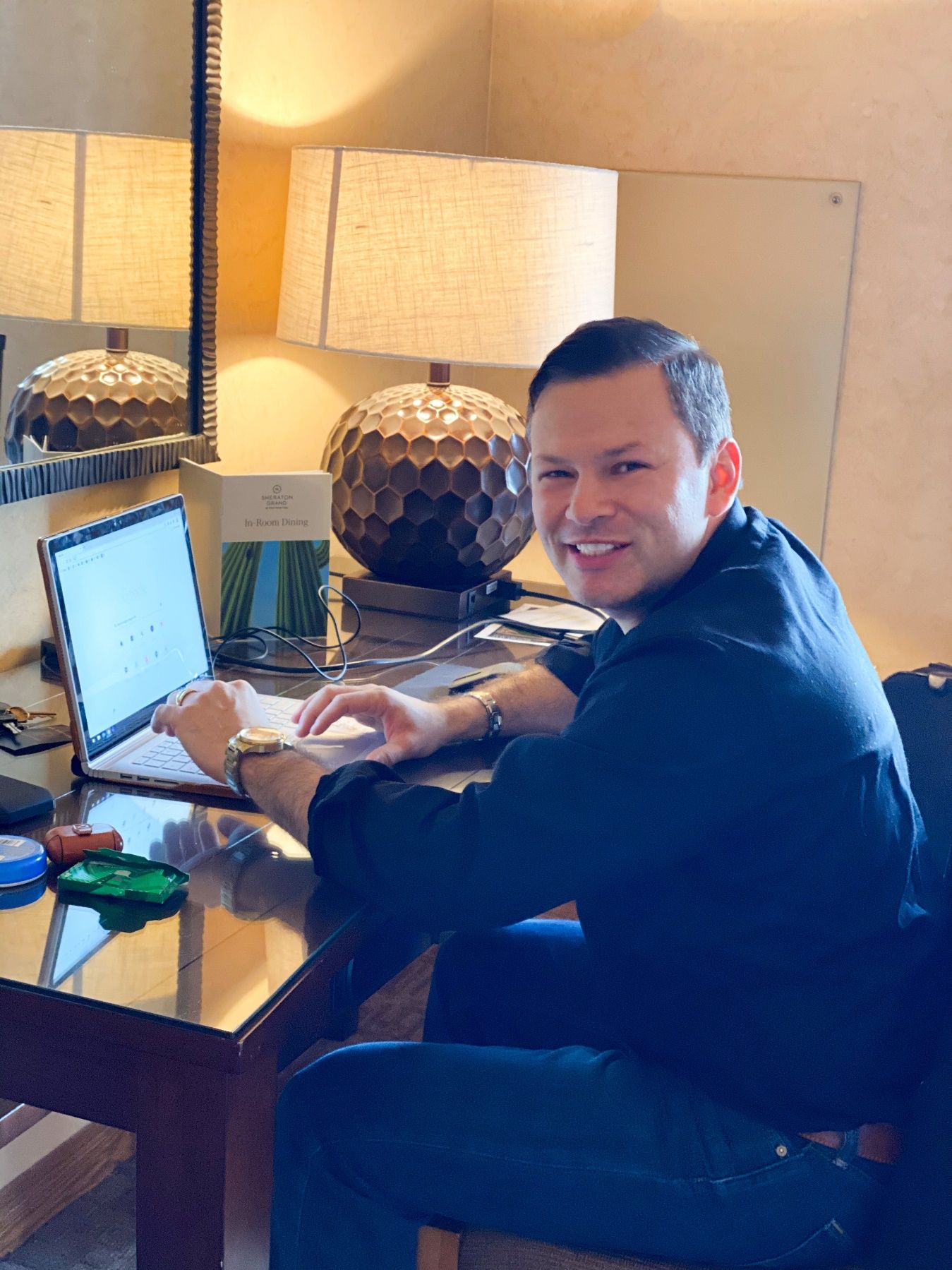 Cars
and Harley motorcycles represent freedom and the thrill of adventure for
me. Every time I ride a Harley or drive a sports car, I feel a deep
connection with the machine and the road. These passions have taught me
to appreciate the details and enjoy the journey as much as the
destination. Dedicating time to my hobbies has also helped me maintain a
balance in my life, always reminding me of the importance of enjoying
and valuing each moment.
Cars
and Harley motorcycles represent freedom and the thrill of adventure for
me. Every time I ride a Harley or drive a sports car, I feel a deep
connection with the machine and the road. These passions have taught me
to appreciate the details and enjoy the journey as much as the
destination. Dedicating time to my hobbies has also helped me maintain a
balance in my life, always reminding me of the importance of enjoying
and valuing each moment.
Each defeat has been a lesson, each stumble an opportunity to get up
stronger. Today, as I look back, I can see how each challenge has
brought me closer to my goals. The final victory is not a destination
but a constant path of learning and overcoming. I am convinced that
success is not measured by the absence of failures but by the ability to
get up and move forward.
To everyone reading this article, I say: do not fear defeat. Embrace
each challenge, learn from each mistake, and keep moving forward with
determination and hope. The final victory is within reach of those who
do not give up. Every fall is an opportunity to rise stronger and wiser,
and each challenge overcome brings us one step closer to our
dreams.
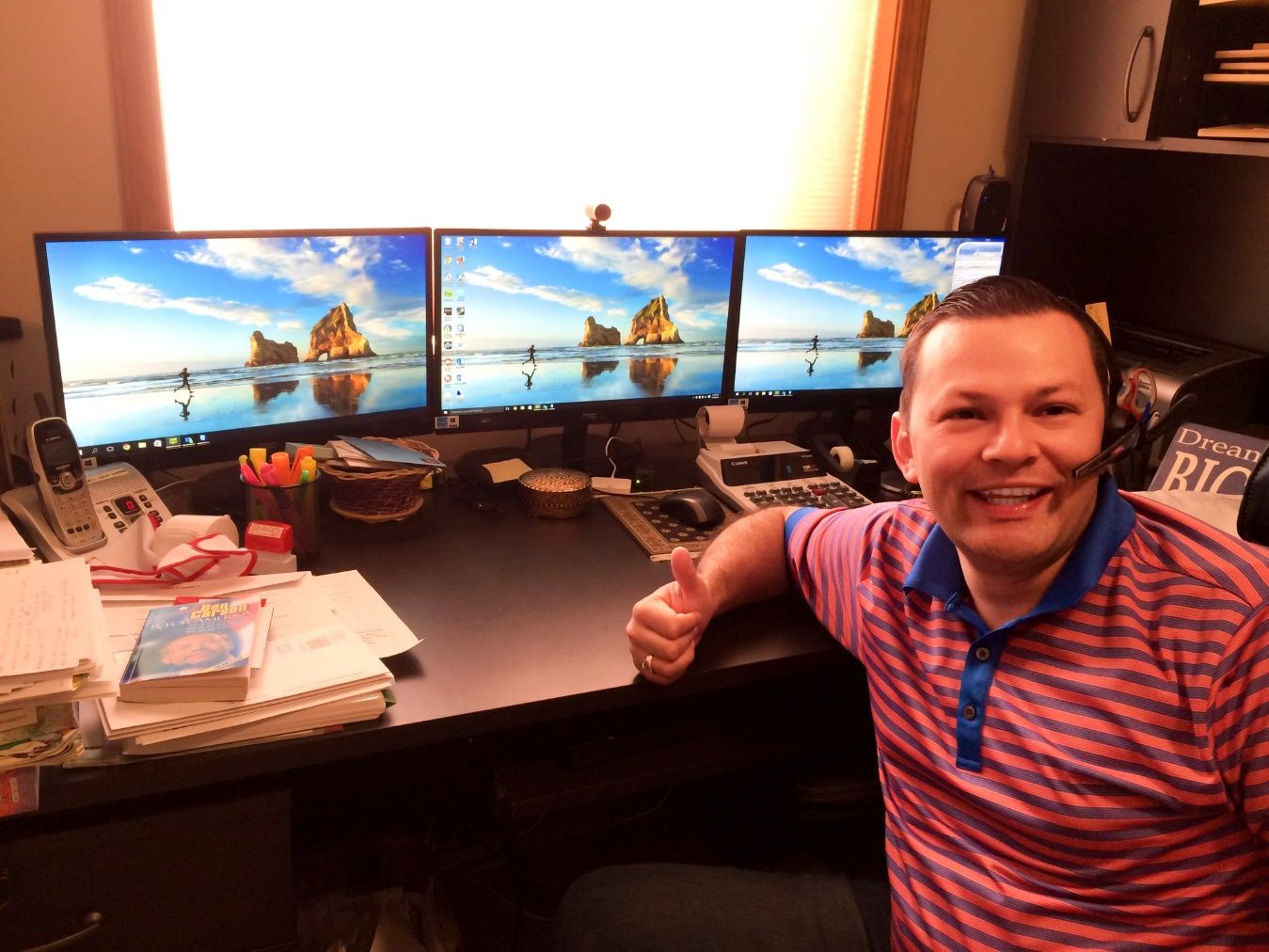
August 22, 2024
De derrota en derrota hasta la victoria final
Las derrotas son inevitables en la vida. A lo largo de mi
trayectoria, he experimentado múltiples fracasos, desde tropiezos en mi
carrera profesional hasta desafíos personales que parecían insuperables.
Sin embargo, cada derrota me ha enseñado valiosas lecciones y me ha
preparado para alcanzar la victoria final. En este artículo, quiero
compartir mi viaje, mis aprendizajes y cómo cada caída me ha acercado
más a mis objetivos.
Primeros tropiezos
 Recuerdo
mis primeros años en Estados Unidos, lleno de esperanzas y sueños, pero
también de incertidumbre y obstáculos. Llegar a un nuevo país sin
conocer a nadie, sin un respaldo económico significativo y con el idioma
como barrera fue una experiencia abrumadora. Mis primeros trabajos no
eran lo que había imaginado para mi futuro, pero cada uno de ellos me
enseñó algo valioso. Trabajé largas horas en empleos que no tenían nada
que ver con mi formación. La frustración y el cansancio se acumulaban,
pero nunca perdí de vista mis metas.
Recuerdo
mis primeros años en Estados Unidos, lleno de esperanzas y sueños, pero
también de incertidumbre y obstáculos. Llegar a un nuevo país sin
conocer a nadie, sin un respaldo económico significativo y con el idioma
como barrera fue una experiencia abrumadora. Mis primeros trabajos no
eran lo que había imaginado para mi futuro, pero cada uno de ellos me
enseñó algo valioso. Trabajé largas horas en empleos que no tenían nada
que ver con mi formación. La frustración y el cansancio se acumulaban,
pero nunca perdí de vista mis metas.
Estos primeros años fueron fundamentales para desarrollar la
resiliencia y la determinación que necesitaría más adelante. Cada día de
trabajo duro, cada dificultad enfrentada, me hicieron más fuerte y más
enfocado en lo que quería lograr. No fue fácil adaptarse a una nueva
cultura y enfrentar la soledad que a veces sentía, pero sabía que todo
esfuerzo tenía su recompensa. Esos primeros tropiezos fueron el comienzo
de un camino que, aunque lleno de desafíos, me llevaría a grandes
logros.
Aprendiendo de los errores
Uno de los momentos más difíciles de mi vida fue enfrentar la
bancarrota. Había invertido tiempo, esfuerzo y recursos en un negocio
que no prosperó. La sensación de fracaso fue abrumadora. Sin embargo,
esta experiencia me enseñó la importancia de la planificación
financiera, la necesidad de estar siempre informado y preparado para los
cambios del mercado, y la relevancia de aprender de los errores en lugar
de lamentarlos. Aprendí que cada fracaso es una oportunidad disfrazada,
una lección que te prepara para el éxito futuro.
Superar la bancarrota no fue fácil, pero fue un proceso que me
fortaleció y me hizo más sabio. Comencé a ver los errores como parte del
aprendizaje necesario para crecer. Empecé a tomar decisiones más
informadas y a valorar la importancia de tener un plan de contingencia.
Este período difícil también me ayudó a identificar mis fortalezas y
debilidades, permitiéndome trabajar en ellas y mejorar constantemente.
Hoy, miro hacia atrás y veo cómo esa experiencia, aunque dolorosa, fue
crucial para mi desarrollo personal y profesional.
La importancia de la familia
En los momentos más oscuros, mi familia siempre ha sido mi pilar.
Recuerdo las noches sin dormir, preocupado por el futuro, pero
encontrando consuelo en el apoyo incondicional de mi esposa Casey y mis
hijos Enrique y Nana. Las tardes de domingo con ellos se convirtieron en
mi refugio, en momentos de recargar energías y recordar por qué luchaba.
La familia me ha enseñado el verdadero significado del amor y el
sacrificio, y su apoyo ha sido fundamental para superar cualquier
adversidad.
Mi hermana María también ha sido una figura clave en mi vida.
Trabajar juntos en Quiroga Law Office, PLLC, nos ha permitido no solo
fortalecer nuestro lazo familiar, sino también construir algo
significativo y duradero. María ha estado a mi lado en cada paso del
camino, ofreciendo su sabiduría y apoyo. La familia es, sin duda, el
cimiento sobre el cual se construye cualquier éxito, y mi historia no
sería la misma sin ellos. Sus sacrificios, su amor y su fe en mí me han
impulsado a seguir adelante incluso en los momentos más difíciles.
 Superando los desafíos
profesionales
Superando los desafíos
profesionales
Fundar Quiroga Law Office, PLLC fue un sueño hecho realidad, pero no
estuvo exento de desafíos. Cada obstáculo, desde problemas legales hasta
la gestión del personal, representó una oportunidad para aprender y
crecer. Hoy, mirar atrás y ver cómo hemos crecido y los reconocimientos
que hemos recibido, como el premio Inc. 5000 en cuatro ocasiones, me
llena de orgullo y satisfacción. Cada desafío superado ha sido un
peldaño hacia el éxito, reforzando mi creencia en la importancia de la
perseverancia y la dedicación.
Otro proyecto importante ha sido Hector’s Whips, una empresa de
alquiler de carros, y Empire Estate Holdings, LLC, dedicada al sector
inmobiliario. Ambas iniciativas han representado nuevos retos y
aprendizajes, pero también han sido testimonio de cómo, con
determinación y esfuerzo, es posible diversificar y prosperar en
diferentes áreas. Estas empresas no solo han sido fuentes de ingresos,
sino también de grandes aprendizajes y satisfacción personal. Cada éxito
profesional ha sido una validación de que los sueños pueden hacerse
realidad con esfuerzo y tenacidad.
La pasión como motor
Mis pasiones por el fútbol, los carros y las motos Harley han sido
motores importantes en mi vida. Estas aficiones me han enseñado la
importancia de la disciplina, la precisión y la dedicación. El fútbol,
en particular, me ha enseñado sobre trabajo en equipo y estrategia,
lecciones que aplico diariamente en mi vida profesional. Cada partido de
fútbol me recuerda que el trabajo en equipo y la estrategia son
esenciales tanto en el deporte como en los negocios.
Los carros y las motos Harley representan para mí la libertad y la
emoción de la aventura. Cada vez que manejo una moto Harley o un carro
deportivo, siento una conexión profunda con la máquina y el camino.
Estas pasiones me han enseñado a apreciar los detalles y a disfrutar el
viaje tanto como el destino. La dedicación a mis hobbies también me ha
ayudado a mantener un equilibrio en mi vida, recordándome siempre la
importancia de disfrutar y valorar cada momento.
 Cada derrota ha sido una
lección, cada tropiezo una oportunidad para levantarme con más fuerza.
Hoy, al mirar atrás, puedo ver cómo cada desafío me ha acercado más a
mis metas. La victoria final no es un destino, sino un camino constante
de aprendizaje y superación. Estoy convencido de que el éxito no se mide
por la ausencia de fracasos, sino por la capacidad de levantarse y
seguir adelante.
Cada derrota ha sido una
lección, cada tropiezo una oportunidad para levantarme con más fuerza.
Hoy, al mirar atrás, puedo ver cómo cada desafío me ha acercado más a
mis metas. La victoria final no es un destino, sino un camino constante
de aprendizaje y superación. Estoy convencido de que el éxito no se mide
por la ausencia de fracasos, sino por la capacidad de levantarse y
seguir adelante.
A todos los que leen este artículo, les digo: no teman a las
derrotas. Abracen cada desafío, aprendan de cada error y sigan adelante
con determinación y esperanza. La victoria final está al alcance de
aquellos que no se rinden. Cada caída es una oportunidad para levantarse
con más fuerza y sabiduría, y cada desafío superado nos acerca un paso
más a nuestros sueños.

August 21, 2024
How New Technologies Influence Real Estate
Technology has drastically changed the way we interact with the
world, and the real estate industry is no exception. As someone who has
been involved in the real estate sector throughout my career, I have
witnessed how these innovations have transformed the way we buy, sell,
and manage properties. In this article, I want to share my perspective
on how new technologies are influencing the real estate market and how
these tools are improving the experience for everyone involved.
 Digitization of Real
Estate Processes
Digitization of Real
Estate Processes
One of the biggest changes I’ve observed is the digitization of real
estate processes. I remember when everything was done on paper, from
offers to contracts. Today, most of these transactions can be done
online, saving time and reducing the possibility of errors. Platforms
like DocuSign allow documents to be signed electronically, which is
especially useful when buyers or sellers are in different
locations.
Additionally, property search platforms have revolutionized the
market. In the past, buyers depended on real estate agents to show them
available options. Now, websites like Zillow, Realtor.com, and Redfin
allow buyers to search for properties from the comfort of their homes,
filtering by location, price, and specific features. This has not only
empowered buyers but also made it easier for agents to reach a wider
audience.
Virtual and Augmented Reality
Another technology that is having a significant impact is virtual
reality (VR) and augmented reality (AR). These tools allow potential
buyers to take virtual tours of properties without being physically
present. I remember using a VR platform to show a property to a client
who lived in another state. They were able to explore every corner of
the house as if they were there in person. This technology not only
saves time and travel costs but also allows buyers to make more informed
and quicker decisions.
 Big
Data and Predictive Analytics
Big
Data and Predictive Analytics
The use of big data and predictive analytics is also changing the
game. These technologies enable real estate professionals to analyze
large volumes of data to identify market trends, value properties more
accurately, and predict future movements. For instance, tools like
HouseCanary and CoreLogic use advanced algorithms to provide property
value estimates based on historical and current data.
I have used these analyses to advise my clients on the best time to
buy or sell. Having access to detailed and accurate information allows
us to make more strategic decisions and minimize risks.
Automation and Artificial Intelligence
Automation and artificial intelligence (AI) are simplifying many
routine tasks in the real estate sector. Chatbots, for example, can
answer common customer questions and schedule visits, freeing up time
for agents to focus on more complex tasks. Additionally, AI algorithms
can help identify potential clients and personalize marketing
strategies.
In my experience, these tools have been invaluable in improving
efficiency and productivity. By automating repetitive tasks, I have been
able to dedicate more time to building relationships with my clients and
providing a more personalized service.
Blockchain and Secure Transactions
Finally, I cannot overlook the impact of blockchain on the real
estate sector. Although it is still in its early stages, this technology
has the potential to revolutionize the way real estate transactions are
conducted. Blockchain offers a secure and transparent way to record and
verify transactions, reducing the risk of fraud and increasing trust
between parties involved.
I have been closely following the development of this technology and
believe that as it becomes more widely adopted, we will see a
significant transformation in the way properties are bought and
sold.
 Technology
is transforming the real estate sector in ways we could not have
imagined just a decade ago. From the digitization of processes to the
use of big data and virtual reality, these innovations are improving
efficiency, accuracy, and the overall experience for buyers, sellers,
and agents. As someone who has lived and worked in this industry, I am
excited to see how these technologies will continue to evolve and
enhance our lives.
Technology
is transforming the real estate sector in ways we could not have
imagined just a decade ago. From the digitization of processes to the
use of big data and virtual reality, these innovations are improving
efficiency, accuracy, and the overall experience for buyers, sellers,
and agents. As someone who has lived and worked in this industry, I am
excited to see how these technologies will continue to evolve and
enhance our lives.
August 21, 2024
Cómo las nuevas tecnologías influyen en los bienes
raíces
La tecnología ha cambiado drásticamente la forma en que interactuamos
con el mundo, y la industria de bienes raíces no es la excepción. Como
alguien que ha estado involucrado en el sector inmobiliario a lo largo
de mi carrera, he sido testigo de cómo estas innovaciones han
transformado la manera en que compramos, vendemos y administramos
propiedades. En este artículo, quiero compartir mi perspectiva sobre
cómo las nuevas tecnologías están influyendo en el mercado de bienes
raíces y cómo estas herramientas están mejorando la experiencia para
todos los involucrados.
 La digitalización de
los procesos inmobiliarios
La digitalización de
los procesos inmobiliarios
Uno de los mayores cambios que he observado es la digitalización de
los procesos inmobiliarios. Recuerdo cuando todo se hacía en papel,
desde las ofertas hasta los contratos. Hoy en día, la mayoría de estos
trámites se pueden realizar en línea, lo que ahorra tiempo y reduce la
posibilidad de errores. Plataformas como DocuSign permiten firmar
documentos de manera electrónica, lo cual es especialmente útil cuando
los compradores o vendedores están en diferentes ubicaciones.
Además, las plataformas de búsqueda de propiedades han revolucionado
el mercado. Antes, los compradores dependían de agentes inmobiliarios
para mostrarles las opciones disponibles. Ahora, sitios web como Zillow,
Realtor.com y Redfin permiten a los compradores buscar propiedades desde
la comodidad de su hogar, filtrando por ubicación, precio y
características específicas. Esto no solo ha empoderado a los
compradores, sino que también ha facilitado que los agentes lleguen a un
público más amplio.
Realidad virtual y aumentada
Otra tecnología que está teniendo un gran impacto es la realidad
virtual (VR) y aumentada (AR). Estas herramientas permiten a los
potenciales compradores realizar visitas virtuales a las propiedades sin
tener que estar físicamente presentes. Recuerdo una vez que utilicé una
plataforma de VR para mostrar una propiedad a un cliente que vivía en
otro estado. Pudo explorar cada rincón de la casa, como si estuviera ahí
en persona. Esta tecnología no solo ahorra tiempo y costos de viaje,
sino que también permite a los compradores tomar decisiones más
informadas y rápidas.
 Big data y análisis
predictivo
Big data y análisis
predictivo
El uso de big data y análisis predictivo también está cambiando el
juego. Estas tecnologías permiten a los profesionales del sector
inmobiliario analizar grandes volúmenes de datos para identificar
tendencias del mercado, valorar propiedades con mayor precisión y
predecir movimientos futuros. Por ejemplo, herramientas como HouseCanary
y CoreLogic utilizan algoritmos avanzados para ofrecer estimaciones de
valor de propiedades basadas en datos históricos y actuales.
He utilizado estos análisis para asesorar a mis clientes sobre el
mejor momento para comprar o vender. Tener acceso a información
detallada y precisa nos permite tomar decisiones más estratégicas y
minimizar riesgos.
Automatización e inteligencia artificial
La automatización y la inteligencia artificial (IA) están
simplificando muchas tareas rutinarias en el sector inmobiliario. Los
chatbots, por ejemplo, pueden responder preguntas comunes de los
clientes y programar visitas, lo que libera tiempo para que los agentes
se concentren en tareas más complejas. Además, los algoritmos de IA
pueden ayudar a identificar clientes potenciales y personalizar
estrategias de marketing.
En mi experiencia, estas herramientas han sido invaluable para
mejorar la eficiencia y la productividad. Al automatizar tareas
repetitivas, he podido dedicar más tiempo a construir relaciones con mis
clientes y ofrecer un servicio más personalizado.
Blockchain y transacciones seguras
Finalmente, no puedo dejar de mencionar el impacto de blockchain en
el sector inmobiliario. Aunque todavía está en sus primeras etapas, esta
tecnología tiene el potencial de revolucionar la forma en que se
realizan las transacciones inmobiliarias. Blockchain ofrece una manera
segura y transparente de registrar y verificar transacciones, lo que
reduce el riesgo de fraude y aumenta la confianza entre las partes
involucradas.
He estado siguiendo de cerca el desarrollo de esta tecnología y creo
que, a medida que se adopte más ampliamente, veremos una transformación
significativa en la forma en que se compran y venden propiedades.
 La tecnología está
transformando el sector inmobiliario de maneras que no podríamos haber
imaginado hace solo una década. Desde la digitalización de los procesos
hasta el uso de big data y la realidad virtual, estas innovaciones están
mejorando la eficiencia, la precisión y la experiencia general para
compradores, vendedores y agentes. Como alguien que ha vivido y
trabajado en esta industria, estoy emocionado de ver cómo estas
tecnologías continuarán evolucionando y mejorando nuestras vidas.
La tecnología está
transformando el sector inmobiliario de maneras que no podríamos haber
imaginado hace solo una década. Desde la digitalización de los procesos
hasta el uso de big data y la realidad virtual, estas innovaciones están
mejorando la eficiencia, la precisión y la experiencia general para
compradores, vendedores y agentes. Como alguien que ha vivido y
trabajado en esta industria, estoy emocionado de ver cómo estas
tecnologías continuarán evolucionando y mejorando nuestras vidas.
August 20, 2024
The Art of Economic Growth in the United States
I have always believed that economic growth in the United States is a
mix of opportunities, strategic decisions, and the ability to adapt. As
an immigrant who came to this country with dreams and aspirations, I
have learned that the path to financial success is not easy, but it is
definitely possible. In this article, I want to share my personal
experience and some practical advice that has helped me thrive
economically in this country.
 Seizing
Opportunities
Seizing
Opportunities
When I arrived in the United States, one of the first things I
noticed was the abundance of opportunities available. From temporary
jobs to educational programs, the country offers countless possibilities
for those willing to work hard. I remember my early years here, working
various jobs and taking advantage of every opportunity that came my way.
These experiences not only provided me with income but also valuable
lessons and skills that would later be fundamental in my career.
Always be on the lookout for opportunities and don’t be afraid to
seize them, even if they don’t seem aligned with your long-term goals.
Sometimes, these opportunities can open unexpected doors and take you to
places you never imagined. A temporary job can turn into a stable
career, and a night class can lead to a new passion or skill. The key is
to stay open and receptive to what the environment has to offer, always
looking for ways to advance and improve.
The Importance of Financial Education
One of the most crucial aspects of economic growth is financial
education. In my early years in this country, I realized that I needed
to understand how to manage my money efficiently. Learning about saving,
investing, and debt management was essential. Initially, I made
financial mistakes that taught me the importance of being well-informed
and prepared. Financial education allowed me to make better decisions
and avoid common economic pitfalls.
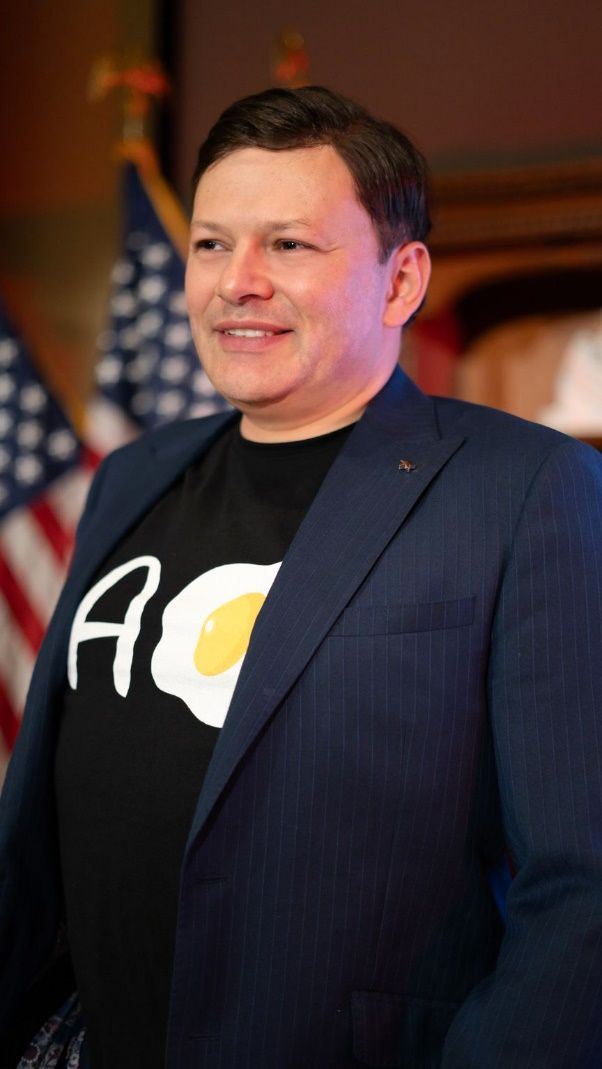
I recommend everyone to take the time to educate themselves on these
topics, whether through courses, books, or professional financial
advice. Knowing the financial basics can make a significant difference
in your ability to accumulate wealth. Understanding concepts like
compound interest, investment diversification, and tax planning gives
you a significant advantage. This education not only helps you manage
your money better but also gives you the confidence needed to make
important financial decisions.
Entrepreneurship and Diversification
Another important pillar of my economic growth has been
entrepreneurship. I decided to start my own company, Quiroga Law Office,
PLLC, with the goal of helping other immigrants navigate the complex
immigration legal system. Entrepreneurship is not easy, but the reward
of seeing your business grow and help others is incomparable. In my
case, it was a way to give back to the community that has given me so
much and at the same time build a solid financial foundation for my
family.
Over the years, I have also diversified my investments into areas
such as real estate and car rentals with Empire Estate Holdings, LLC,
and Hector’s Whips. Diversifying your income sources is key to
protecting yourself against economic uncertainties and ensuring a steady
flow of income. Not putting all your eggs in one basket allows you to
minimize risks and take advantage of different growth opportunities.
This diversification strategy has been essential for my long-term
stability and economic growth.
Support Networks and Mentorship
No one achieves success alone. In my case, having a strong support
network and seeking mentorship has been essential. My family, especially
my wife Casey, has been a fundamental pillar in my life. Her
unconditional support has allowed me to focus on my goals and overcome
the challenges that have arisen along the way. Additionally, my sister
María, who is also an immigration lawyer, has been a constant source of
support and professional collaboration.
I have been fortunate to find mentors who have guided and advised me
in my professional journey. Mentorship provides valuable perspective and
helps you avoid common mistakes. My recommendation is to surround
yourself with people who support you and challenge you to continuously
improve. Do not underestimate the value of relationships and networking.
These connections can open doors, provide invaluable advice, and offer
the emotional support needed to persevere in difficult times.
The Right Mindset
Finally, I want to highlight the importance of having the right
mindset. The path to economic success is filled with challenges and
obstacles. There will be moments of doubt and uncertainty, but
maintaining a positive and resilient mindset is crucial. I have always
believed in the importance of setting clear goals, working hard, and
keeping faith in oneself. Attitude and perseverance can take you a long
way. Facing each challenge with a proactive attitude and strong
determination is essential.

The right mindset also means being willing to learn and continuously
adapt. The world is constantly changing, and the skills and knowledge
that are relevant today may not be tomorrow. Being open to new ideas,
learning from mistakes, and staying updated with current trends is vital
for economic growth. This approach not only keeps you competitive but
also allows you to identify and seize new opportunities as they
arise.
I grew up in Colombia, and when I arrived in the United States in
2000, I faced many challenges. However, through education,
entrepreneurship, and the support of my family and mentors, I have been
able to build a prosperous life here. I hope that my story and these
tips inspire you to pursue your own dreams and achieve economic success
in this country.
Remember, economic growth is an art that requires dedication,
continuous learning, and a strong mindset. I am convinced that, with
determination and effort, we can all thrive in this land of
opportunities.
August 20, 2024
El arte de crecer económicamente en los Estados
Unidos
Siempre he creído que el crecimiento económico en los Estados Unidos
es una mezcla de oportunidades, decisiones estratégicas y la capacidad
de adaptarse. Como inmigrante que llegó a este país con sueños y
aspiraciones, he aprendido que el camino hacia el éxito financiero no es
fácil, pero definitivamente es posible. En este artículo, quiero
compartir mi experiencia personal y algunos consejos prácticos que me
han ayudado a prosperar económicamente en este país.
 Aprovechando
las oportunidades
Aprovechando
las oportunidades
Cuando llegué a Estados Unidos, una de las primeras cosas que noté
fue la cantidad de oportunidades disponibles. Desde trabajos temporales
hasta programas educativos, el país ofrece un sinfín de posibilidades
para quienes estén dispuestos a trabajar duro. Recuerdo mis primeros
años aquí, trabajando en diversos empleos y aprovechando cada
oportunidad que se presentaba. Estas experiencias no solo me
proporcionaron ingresos, sino también valiosas lecciones y habilidades
que más tarde serían fundamentales en mi carrera.
Estar siempre atento a las oportunidades y no tener miedo de
aprovecharlas, incluso si no parecen estar alineadas con tus objetivos a
largo plazo, es crucial. A veces, estas oportunidades pueden abrir
puertas inesperadas y llevarte a lugares que nunca imaginaste. Un
trabajo temporal puede convertirse en una carrera estable, y una clase
nocturna puede conducir a una nueva pasión o habilidad. La clave es
mantenerse abierto y receptivo a lo que el entorno tiene para ofrecer,
siempre buscando formas de avanzar y mejorar.
La importancia de la educación financiera
Uno de los aspectos más cruciales del crecimiento económico es la
educación financiera. En mis primeros años en este país, me di cuenta de
que necesitaba entender cómo manejar mi dinero de manera eficiente.
Aprender sobre ahorro, inversión y gestión de deudas fue fundamental.
Inicialmente, cometí errores financieros que me enseñaron la importancia
de estar bien informado y preparado. La educación financiera me permitió
tomar decisiones más acertadas y evitar problemas económicos
comunes.

Recomiendo a todos que se tomen el tiempo para educarse en estos
temas, ya sea a través de cursos, libros o asesoramiento financiero
profesional. Conocer los fundamentos financieros puede marcar una gran
diferencia en tu capacidad para acumular riqueza. Comprender conceptos
como el interés compuesto, la diversificación de inversiones y la
planificación fiscal te da una ventaja significativa. Esta educación no
solo te ayuda a manejar mejor tu dinero, sino que también te proporciona
la confianza necesaria para tomar decisiones financieras
importantes.
Emprendimiento y diversificación
Otro pilar importante de mi crecimiento económico ha sido el
emprendimiento. Decidí fundar mi propia empresa, Quiroga Law Office,
PLLC, con el objetivo de ayudar a otros inmigrantes a navegar el
complejo sistema legal de inmigración. Emprender no es fácil, pero la
recompensa de ver cómo tu negocio crece y ayuda a otros es incomparable.
En mi caso, fue una manera de devolver a la comunidad que me ha dado
tanto y, al mismo tiempo, construir una base financiera sólida para mi
familia.
A lo largo de los años, también he diversificado mis inversiones en
áreas como bienes raíces y alquiler de automóviles con Empire Estate
Holdings, LLC y Hector’s Whips. Diversificar tus fuentes de ingresos es
clave para protegerte contra las incertidumbres económicas y asegurar un
flujo constante de ingresos. No poner todos los huevos en una sola
canasta te permite minimizar riesgos y aprovechar diferentes
oportunidades de crecimiento. Esta estrategia de diversificación ha sido
esencial para mi estabilidad y crecimiento económico a largo plazo.
Redes de apoyo y mentoría
Nadie alcanza el éxito solo. En mi caso, contar con una red de apoyo
sólida y buscar mentoría ha sido esencial. Mi familia, especialmente mi
esposa Casey, ha sido un pilar fundamental en mi vida. Su apoyo
incondicional me ha permitido enfocarme en mis objetivos y superar los
desafíos que han surgido en el camino. Además, mi hermana María, quien
también es abogada de inmigración, ha sido una fuente constante de apoyo
y colaboración profesional.
He tenido la suerte de encontrar mentores que me han guiado y
aconsejado en mi camino profesional. La mentoría proporciona una
perspectiva valiosa y te ayuda a evitar errores comunes. Mi
recomendación es rodearte de personas que te apoyen y te desafíen a
mejorar continuamente. No subestimes el valor de las relaciones y el
networking. Estas conexiones pueden abrir puertas, proporcionar consejos
invaluables y ofrecer el apoyo emocional necesario para perseverar en
tiempos difíciles.
La mentalidad correcta
Finalmente, quiero destacar la importancia de tener la mentalidad
correcta. El camino hacia el éxito económico está lleno de desafíos y
obstáculos. Habrá momentos de duda e incertidumbre, pero mantener una
mentalidad positiva y resiliente es crucial. Siempre he creído en la
importancia de establecer metas claras, trabajar duro y mantener la fe
en uno mismo. La actitud y la perseverancia pueden llevarte muy lejos.
Enfrentar cada desafío con una actitud proactiva y una fuerte
determinación es esencial.

La mentalidad correcta también implica estar dispuesto a aprender y
adaptarse continuamente. El mundo está en constante cambio, y las
habilidades y conocimientos que son relevantes hoy pueden no serlo
mañana. Estar abierto a nuevas ideas, aprender de los errores y
mantenerse actualizado con las tendencias actuales es vital para el
crecimiento económico. Este enfoque no solo te mantiene competitivo,
sino que también te permite identificar y aprovechar nuevas
oportunidades conforme surgen.
Crecí en Colombia, y al llegar a los Estados Unidos en el año 2000,
enfrenté muchos desafíos. Sin embargo, a través de la educación, el
emprendimiento y el apoyo de mi familia y mentores, he podido construir
una vida próspera aquí. Espero que mi historia y estos consejos te
inspiren a perseguir tus propios sueños y alcanzar el éxito económico en
este país.
Recuerda, el crecimiento económico es un arte que requiere
dedicación, aprendizaje continuo y una mentalidad fuerte. Estoy
convencido de que, con determinación y esfuerzo, todos podemos prosperar
en este país de oportunidades.
August 19, 2024
How to Know if You Are a Car or Motorcycle
Person
Since I can remember, I have felt a deep connection with vehicles.
Over the years, I have had the opportunity to experience the thrill of
driving both cars and motorcycles. However, I have always wondered: what
makes someone prefer one over the other? In this article, I want to
share my personal perspective on how to determine if you are a car or
motorcycle person.
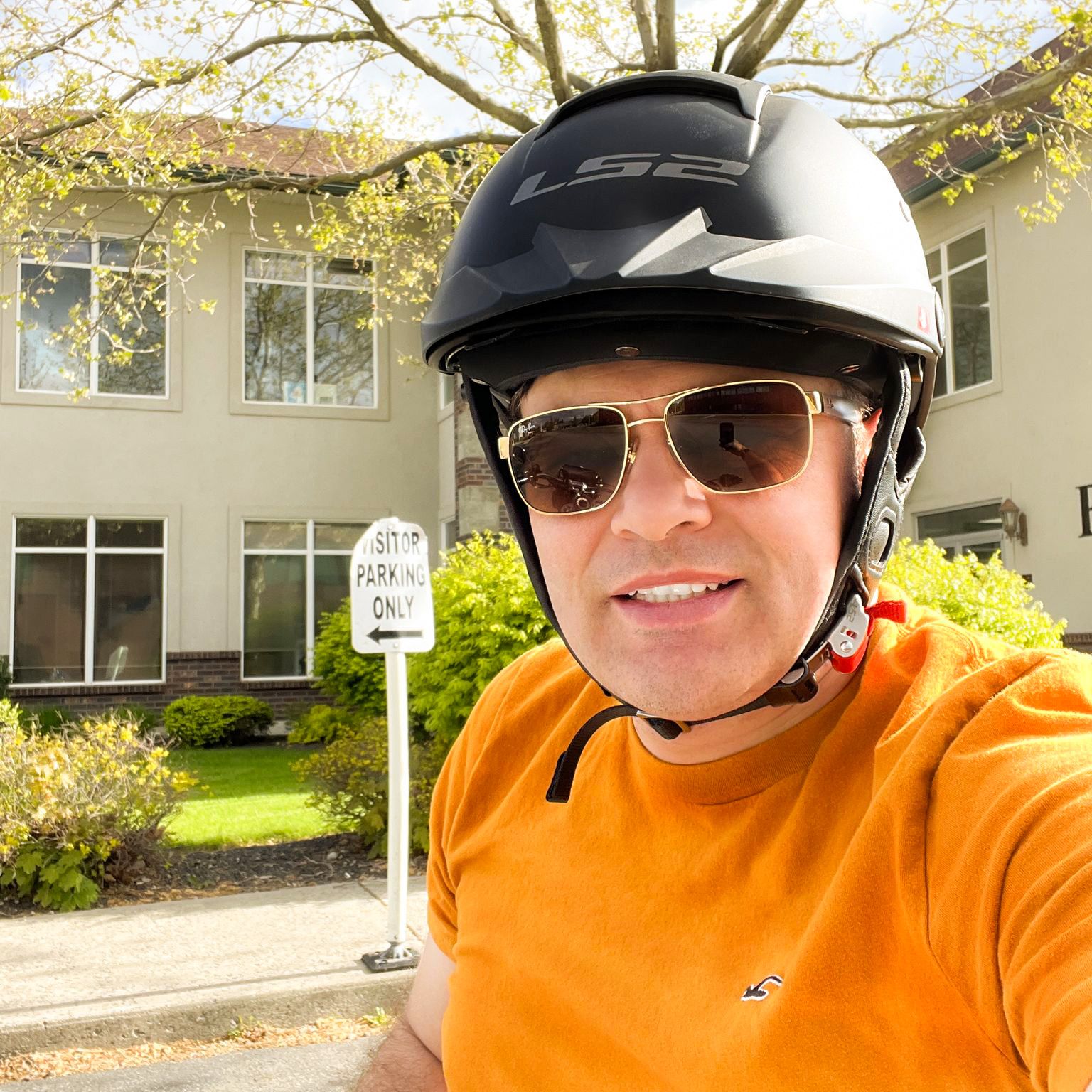 Comfort and
Functionality
Comfort and
Functionality
When I think of cars, the first thing that comes to mind is comfort.
A car provides you with a closed space, protected from the weather and
external elements. It is perfect for long road trips, taking the family
out for a drive, or simply enjoying the daily commute with air
conditioning and loud music.
I remember when I bought my first car. It was a small sedan, but for
me, it represented freedom and independence. I could go anywhere without
worrying about the rain or the heat. Plus, it had enough space to carry
my stuff, whether for a weekend getaway or to transport soccer
gear.
On the other hand, motorcycles offer a completely different
experience. The first time I rode one, I felt a mix of fear and
excitement. The sensation of the wind on my face and the freedom that a
motorcycle provides is indescribable. However, it is also a less
practical option considering the lack of space to carry objects or the
exposure to the weather.
Adrenaline and Connection to the Road
If you are someone who seeks adrenaline and a more direct connection
to the road, motorcycles are probably for you. There is something very
special about feeling every curve, being closer to the asphalt, and
having such direct control over the vehicle. Motorcycles force you to be
more alert and aware of your surroundings, which can be very
exciting.
I remember a trip I took with friends through the mountains of the
northwest U.S. Every curve, every ascent and descent made me feel alive.
It wasn’t just a trip; it was an experience. We were in the middle of a
snowstorm, and although it was a challenge, it also taught me a lot
about adaptability and resilience.
 On the other hand, cars can
also offer exciting experiences, especially when it comes to sports
cars. The speed, the roar of the engine, and the feeling of total
control can be equally addictive. However, the enclosed nature of a car
can make the experience less visceral compared to a motorcycle.
On the other hand, cars can
also offer exciting experiences, especially when it comes to sports
cars. The speed, the roar of the engine, and the feeling of total
control can be equally addictive. However, the enclosed nature of a car
can make the experience less visceral compared to a motorcycle.
Safety and Protection
Safety is another crucial aspect to consider. There is no doubt that
cars are generally safer than motorcycles. They are designed to protect
occupants in case of an accident, with multiple safety systems such as
seat belts, airbags, and reinforced bodies.
I have had some scares on the road, and I always appreciate the added
protection that a car provides. I remember a minor accident I had in the
city. Fortunately, it was not serious, but it made me appreciate the
protection that four-wheeled vehicles offer.
Motorcycles, on the other hand, are more vulnerable. The lack of a
protective structure means that any accident can have more serious
consequences. This does not mean that they cannot be enjoyed safely;
with the right gear and responsible riding, motorcycles can be a safe
option. But the open nature of motorcycles always implies a greater
risk.
Lifestyle and Identity
Finally, I believe that the preference for cars or motorcycles also
has a lot to do with lifestyle and personal identity. For some, a car is
an extension of their home, a place where they can relax and feel
comfortable. For others, a motorcycle is an expression of freedom and
rebellion, a way to stand out and live life to the fullest.
 For me,
cars have always been an essential part of my life. I enjoy the comfort,
functionality, and safety they provide. But I also have a special place
in my heart for motorcycles. The thrill and freedom they offer are
incomparable, and every time I ride one, I feel rejuvenated.
For me,
cars have always been an essential part of my life. I enjoy the comfort,
functionality, and safety they provide. But I also have a special place
in my heart for motorcycles. The thrill and freedom they offer are
incomparable, and every time I ride one, I feel rejuvenated.
Ultimately, deciding whether you are a car or motorcycle person
depends on your personal preferences, lifestyle, and priorities. Both
have their advantages and disadvantages, and what matters is what you
value most in your driving experience. Whether you prefer the comfort
and safety of a car or the excitement and freedom of a motorcycle, the
important thing is to enjoy the journey and find the vehicle that best
suits you.
.: archivos & buscar :.
 La
importancia de la resiliencia
La
importancia de la resiliencia 
 En
mi caso, desarrollar una rutina diaria estructurada me ha ayudado
enormemente. Cada mañana, dedico unos minutos a planificar mi día,
estableciendo metas claras y realistas. Además, he aprendido a decir
“no” a las actividades que no se alinean con mis objetivos principales,
lo que me permite concentrarme en lo que realmente importa.
En
mi caso, desarrollar una rutina diaria estructurada me ha ayudado
enormemente. Cada mañana, dedico unos minutos a planificar mi día,
estableciendo metas claras y realistas. Además, he aprendido a decir
“no” a las actividades que no se alinean con mis objetivos principales,
lo que me permite concentrarme en lo que realmente importa.  Nostalgia and Classic
Design
Nostalgia and Classic
Design  I
remember an occasion when I had a minor accident with an old car.
Although I came out unscathed, the lack of modern safety features made
me reflect on the risks I took every time I drove. Today’s cars are not
only designed to prevent accidents but also to protect occupants in the
event of a collision.
I
remember an occasion when I had a minor accident with an old car.
Although I came out unscathed, the lack of modern safety features made
me reflect on the risks I took every time I drove. Today’s cars are not
only designed to prevent accidents but also to protect occupants in the
event of a collision. 
 I
remember my early years in the United States, full of hopes and dreams
but also uncertainty and obstacles. Arriving in a new country without
knowing anyone, without significant financial backing, and with the
language barrier was an overwhelming experience. My first jobs were not
what I had envisioned for my future, but each one taught me something
valuable. I worked long hours in jobs unrelated to my training.
Frustration and fatigue piled up, but I never lost sight of my
goals.
I
remember my early years in the United States, full of hopes and dreams
but also uncertainty and obstacles. Arriving in a new country without
knowing anyone, without significant financial backing, and with the
language barrier was an overwhelming experience. My first jobs were not
what I had envisioned for my future, but each one taught me something
valuable. I worked long hours in jobs unrelated to my training.
Frustration and fatigue piled up, but I never lost sight of my
goals.  Overcoming
Professional Challenges
Overcoming
Professional Challenges  Cars
and Harley motorcycles represent freedom and the thrill of adventure for
me. Every time I ride a Harley or drive a sports car, I feel a deep
connection with the machine and the road. These passions have taught me
to appreciate the details and enjoy the journey as much as the
destination. Dedicating time to my hobbies has also helped me maintain a
balance in my life, always reminding me of the importance of enjoying
and valuing each moment.
Cars
and Harley motorcycles represent freedom and the thrill of adventure for
me. Every time I ride a Harley or drive a sports car, I feel a deep
connection with the machine and the road. These passions have taught me
to appreciate the details and enjoy the journey as much as the
destination. Dedicating time to my hobbies has also helped me maintain a
balance in my life, always reminding me of the importance of enjoying
and valuing each moment. 
 Digitization of Real
Estate Processes
Digitization of Real
Estate Processes  Big
Data and Predictive Analytics
Big
Data and Predictive Analytics  Technology
is transforming the real estate sector in ways we could not have
imagined just a decade ago. From the digitization of processes to the
use of big data and virtual reality, these innovations are improving
efficiency, accuracy, and the overall experience for buyers, sellers,
and agents. As someone who has lived and worked in this industry, I am
excited to see how these technologies will continue to evolve and
enhance our lives.
Technology
is transforming the real estate sector in ways we could not have
imagined just a decade ago. From the digitization of processes to the
use of big data and virtual reality, these innovations are improving
efficiency, accuracy, and the overall experience for buyers, sellers,
and agents. As someone who has lived and worked in this industry, I am
excited to see how these technologies will continue to evolve and
enhance our lives.  Seizing
Opportunities
Seizing
Opportunities 

 Comfort and
Functionality
Comfort and
Functionality  On the other hand, cars can
also offer exciting experiences, especially when it comes to sports
cars. The speed, the roar of the engine, and the feeling of total
control can be equally addictive. However, the enclosed nature of a car
can make the experience less visceral compared to a motorcycle.
On the other hand, cars can
also offer exciting experiences, especially when it comes to sports
cars. The speed, the roar of the engine, and the feeling of total
control can be equally addictive. However, the enclosed nature of a car
can make the experience less visceral compared to a motorcycle.  For me,
cars have always been an essential part of my life. I enjoy the comfort,
functionality, and safety they provide. But I also have a special place
in my heart for motorcycles. The thrill and freedom they offer are
incomparable, and every time I ride one, I feel rejuvenated.
For me,
cars have always been an essential part of my life. I enjoy the comfort,
functionality, and safety they provide. But I also have a special place
in my heart for motorcycles. The thrill and freedom they offer are
incomparable, and every time I ride one, I feel rejuvenated.